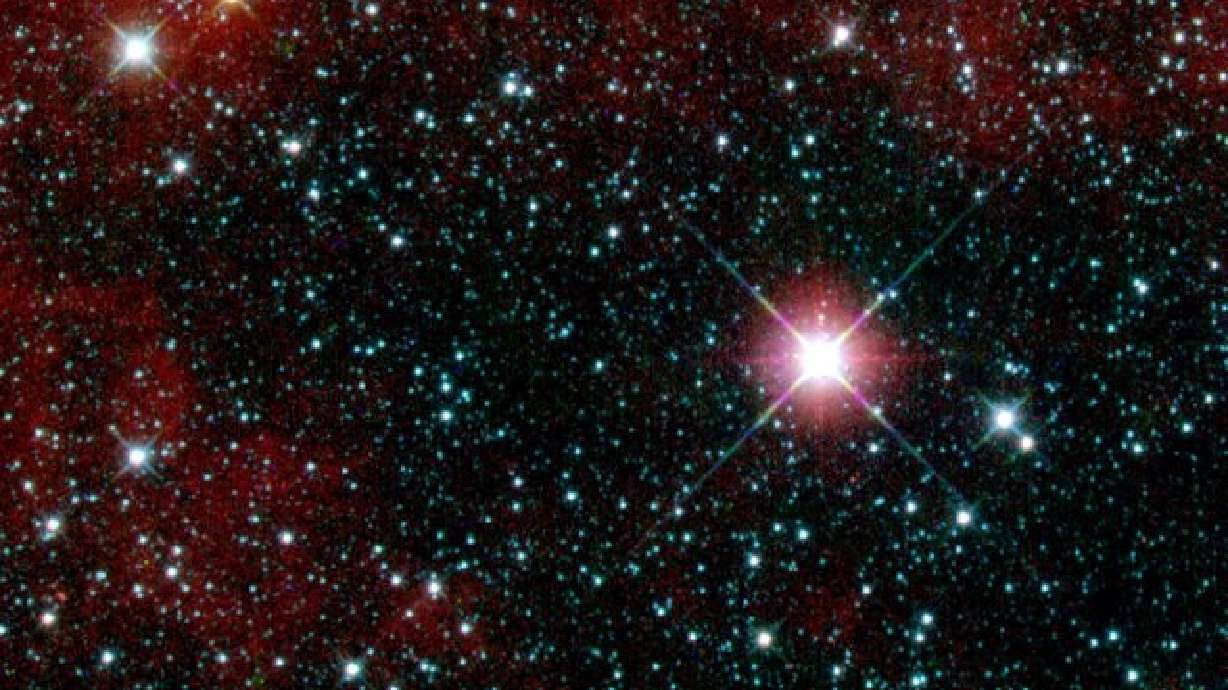Estimated read time: 3-4 minutes
This archived news story is available only for your personal, non-commercial use. Information in the story may be outdated or superseded by additional information. Reading or replaying the story in its archived form does not constitute a republication of the story.
BOSTON — A new study done by physicists at the Massachusetts Institute of Technology found that stars at the edge of the Milky Way travel more slowly than those closer to the center. Their findings suggest that our galaxy's gravitational core may be lighter in mass and contain less dark matter than previously thought.
The Milky Way, which according to NASA is estimated to be 13.6 billion years old, spins like water in a whirlpool, rotating in part by all the matter that swirls within its disk. Astronomer Vera Rubin and her work in the 1970s was among the first pieces of evidence that galaxies cannot rotate just from visible matter, suggesting the existence of dark matter, an unknown entity that may outweigh all the stars and other visible matter in the universe.
Since then, researchers have observed similar flat curves in neighboring galaxies, further supporting the existence of dark matter. But only recently have there been attempts in charting the rotation curves of the Milky Way.
"It turns out it's harder to measure a rotation curve when you're sitting inside a galaxy," said Xiaowei Ou, a graduate student at MIT and the study's first author.
In 2019, Anna-Christina Eilers, assistant professor of physics at MIT, began to analyze earlier data from the Gaia space telescope. It showed stars as far as 81,000 light years from the Milky Way's center. The data suggested a flat, yet mildly declining rotation curve from the galaxy, hinting at there being a high volume of dark matter at its core.
But new data released by the telescope that includes stars as far as 100,000 light years from the galaxy's core led to the study's researchers refining their analysis, using measurements from the Apache Point Observatory Galactic Evolution Experience, a ground-based survey.
"We feed all this information into an algorithm to try to learn connections that can then give us better estimates of a star's distance," Ou said. "That's how we can push out to farther distances."
Through data from the telescope and APOGEE, the researchers analyzed measurements of more than 33,000 stars across the Milky Way. They wanted to determine each star's "circular velocity," which essentially means how fast a star can circle the galactic disk relative to its distance from the galaxy's center.
The researchers then plotted each star's velocity against its distance, creating a rotation curve, which represents how fast matter rotates at a given distance from the center of the galaxy. The shape of the curve gives analysts an idea of how much visible matter and dark matter is in the galaxy.
"What we were really surprised to see was that this curve remained flat, flat, flat out to a certain distance, and then it started tanking," said Lina Necib, assistant professor of physics at MIT. "This means the outer stars are rotating a little slower than expected, which is a very surprising result."
The results indicated to researchers that the center of the Milky Way may be less dense, with less dark matter, than the science community previously thought.
"This puts this result in tension with other measurements," Necib said. "There is something fishy going on somewhere, and it's really exciting to figure out where that is, to really have a coherent picture of the Milky Way."








